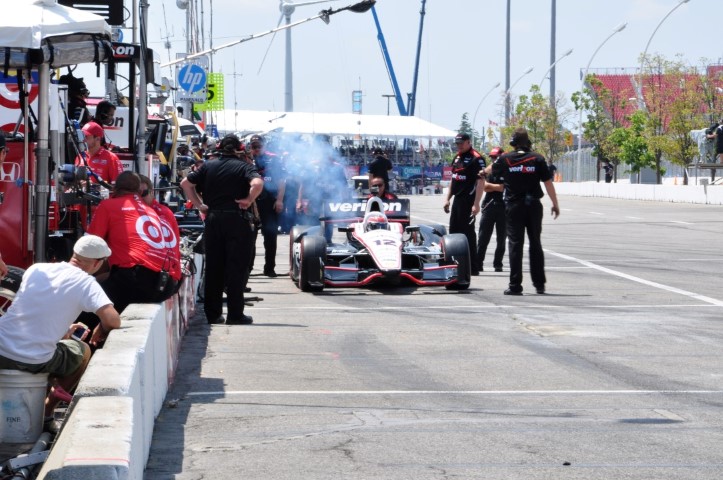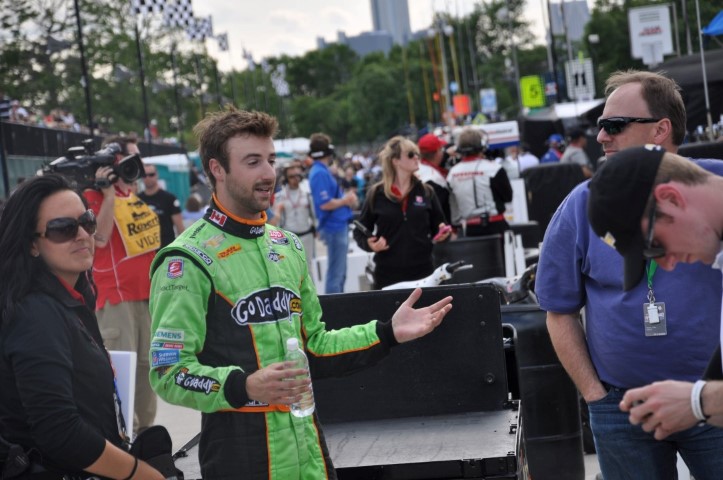IndyCar to evaluate penalties on engine changes
- Written by The Driver
- Published in Auto Racing
- font size decrease font size increase font size
- Be the first to comment!
EDMONTON, Alberta -- IndyCar CEO Randy Bernard said Sunday the series will consider during the offseason changing the penalty currently levied on teams for unapproved engine changes.
IndyCar this season added Chevrolet and Lotus to the series, marking the first time in seven seasons Honda has manufacturer competition. To control costs -- as an enticement for the new manufacturers -- IndyCar instituted strict rules on engine changes.

An unapproved engine change currently costs a team 10 spots on the starting grid, and many have wondered if the penalty should instead be levied against the manufacturer.
"Can you take it away and put more on the engine manufacturers? I don't know," Bernard said before the race at Edmonton. "Those are things we'll sit down at the end of this year and make assessments on. We'll sit down with the engine manufacturers and the teams and try to come up with a better solution, if there is one."
Under the rules set this season, and according to Bernard requested by the manufacturers, teams are not allowed to change engines before they've run 1,850 miles. Any changes before the mileage mark are penalized, even if an engine fails during a test session.
Teams are also only allowed five engines per season, and every engine change after the fifth incurs a penalty.
Five drivers served 10-spot penalties before Sunday's race, including IndyCar points leader Ryan Hunter-Reay. He won the pole, but was dropped to 11th on the starting grid for changing his engine. Scott Dixon, who began the day ranked fourth in points, was penalized for using a sixth engine.
Then, because Hunter-Reay and Dixon had changed engines, Penske Racing decided to swap the engine for Will Power, who is second in points. The team figured there was not much to lose since the other two contenders would also be serving penalties.
Drivers seem to understand the reason for the rules.
"If that rule would not be there, I think we would see a lot more engine changing and the costs would skyrocket," Alex Tagliani said.
In NASCAR, cars go to the back of the field at the start of the race for an unapproved engine change. But it's much harder to pass on the road and street courses, so the IndyCar penalty system can be crippling.
Still, Ryan Briscoe noted Formula One has a five-spot penalty for engine changes.
"You have to have something in place where you can't just change engines every session," Briscoe said. "Comparatively, five (in F1) is like 10 here. It's easier to pass here. We've probably seen more penalties than everyone would like to see, that will come with experience and reliability down the road.
"But I think you need to control it somehow for the cost and development."
Still, four-time series champion Dario Franchitti wants to see relief for engine failures in testing. Scott Dixon, his teammate, Power and James Hinchcliffe are among those who had engine issues during a test session and were penalized on race weekend.

"I don't think it's really fair," Franchitti said. "There was a point in the middle of the year, Scott had a blow-up. A bunch of other guys had penalties -- Hinchcliffe. That I would like to see taken away. But if you blow an engine up for practice or qualifying, I think it's a fair rule."
Tagliani agreed with lifting the testing penalty.
"You need to go testing, right now with the rule the way it is, everybody is afraid of testing," he said.
